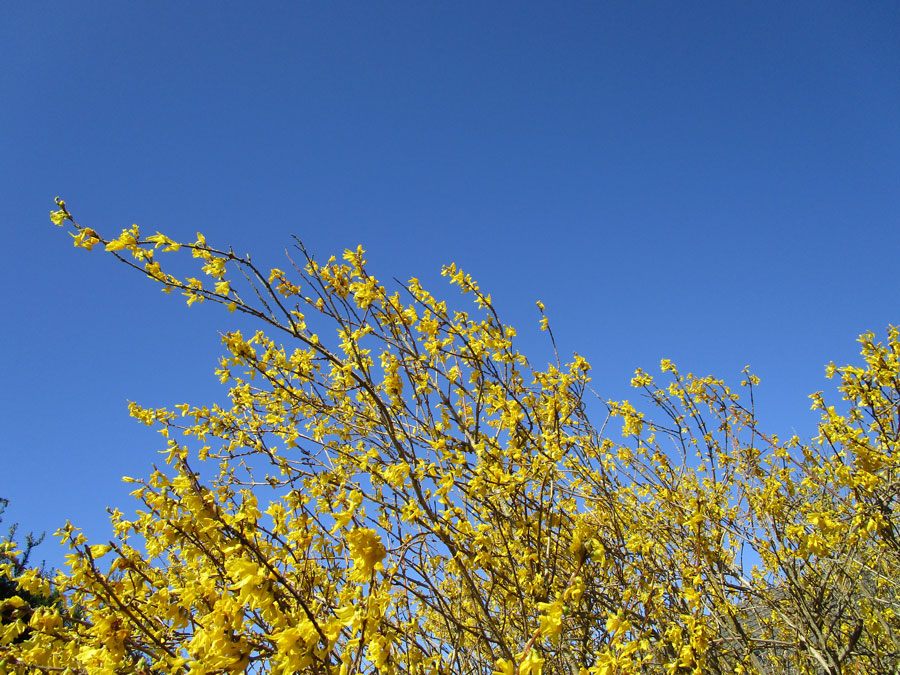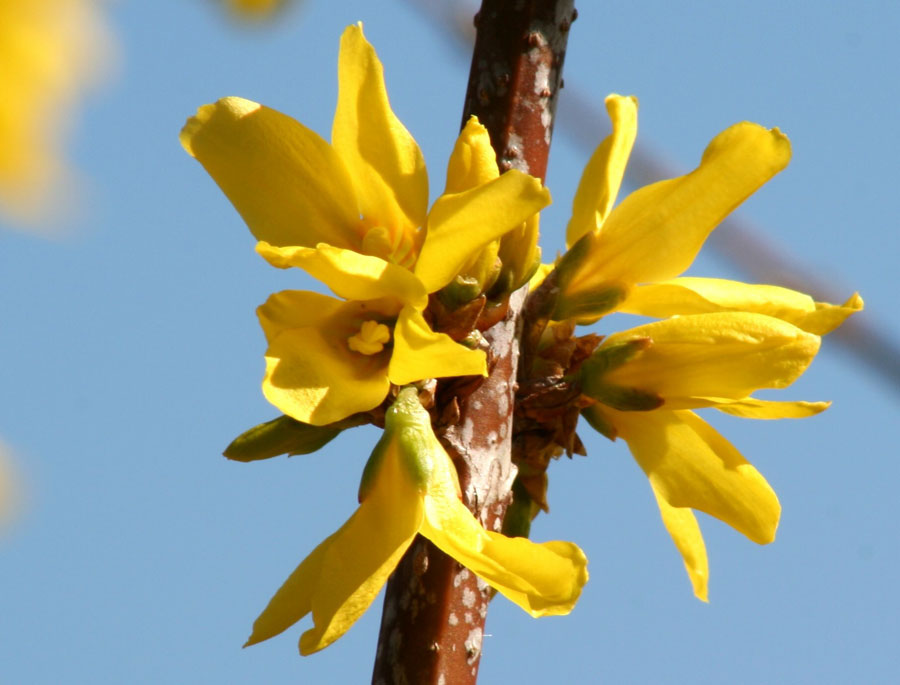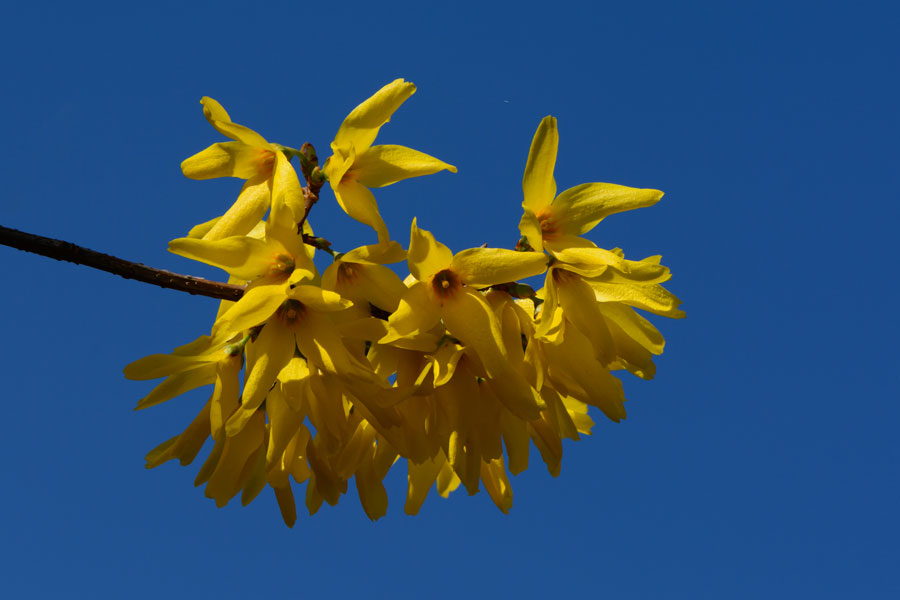Welcome to the enchanting world of Forsythia! Did you know that Forsythia is often called the "harbinger of spring"? This stunning flowering plant, with its delicate yellow blossoms, has the power to transform any garden into a mesmerizing oasis. In this article, we'll explore the life cycle of Forsythia and share valuable insights on how to harness its beauty in your own garden. Get ready to embark on a journey through nature's vibrant palette!
Understanding the Life Cycle of Forsythia
To truly appreciate the beauty of Forsythia, it is essential to understand its remarkable life cycle. Forsythia is a deciduous shrub that goes through distinct stages throughout the year. In early spring, before the arrival of other flowers, Forsythia bursts into a riot of yellow blooms, creating a breathtaking spectacle. These blossoms emerge on the bare branches, creating a striking contrast with the dull winter landscape.
As the spring progresses, the flowers gradually fade, giving way to small, green leaves. The shrub then enters a phase of vigorous growth, with the leaves expanding and the branches becoming more abundant. During the summer months, the foliage of Forsythia provides a lush backdrop for other plants in your garden. In autumn, the leaves turn a vibrant shade of yellow, adding a final burst of color before they fall off, leaving the shrub bare once again.
Signs That a Forsythia Bush is Dying

While Forsythia is a resilient plant, it is not immune to various environmental factors that can cause it to deteriorate. It is crucial to be vigilant and recognize the signs of a dying Forsythia bush to take immediate action and prevent further damage. Now will there be signs that a forsythia bush is dying?
One common indication of a dying Forsythia is the presence of withered or discolored leaves. If you notice that the leaves are turning brown or yellow, it is a clear sign that the plant is not receiving adequate nutrients or water.
Additionally, a dying Forsythia may display stunted growth or a lack of new shoots. If you observe that the shrub is not producing new branches or if the existing branches appear weak and brittle, it is a strong indication that the plant is struggling to survive. Another telltale sign of a dying Forsythia is the presence of pests or diseases, such as aphids or powdery mildew. These infestations weaken the plant and can ultimately lead to its demise if left unattended.
How to Revive a Dying Forsythia Bush
If you notice that your Forsythia bush is showing signs of decline, don't despair. With proper care and attention, it is often possible to revive a dying Forsythia and restore its former glory. The first step is to assess the growing conditions of the plant. Make sure it is planted in well-draining soil and receives ample sunlight. If the soil is compacted or lacks nutrients, consider aerating the soil and adding organic matter to improve its fertility.
Next, evaluate the watering routine. Forsythia prefers moist but not waterlogged soil. Ensure that you are providing sufficient water, especially during dry spells, but avoid overwatering, as it can lead to root rot. Additionally, prune away any dead or diseased branches to promote new growth and improve air circulation. Applying a balanced fertilizer in early spring can also provide the necessary nutrients to rejuvenate the plant.
Harnessing the Beauty of Forsythia in Your Garden
Now that you have a deeper understanding of the life cycle of Forsythia and how to revive a dying bush, let's explore how you can harness its beauty in your own garden. Planting Forsythia strategically can create stunning visual impact and add a touch of elegance to any landscape. Choose a location that receives full sun or partial shade, as Forsythia thrives in these conditions.
When planting Forsythia, ensure that you give it enough space to grow. These shrubs can reach a height and spread of up to 10 feet, so provide ample room for their magnificent display. To create a striking focal point, consider planting Forsythia as a standalone centerpiece or in groups. The vibrant yellow blooms will draw attention and create a sense of joy and warmth in your garden.
Planting and Caring for Forsythia
To ensure the optimal growth and health of your Forsythia, it is essential to follow proper planting and care techniques. Start by preparing the soil, ensuring it is well-draining and rich in organic matter. Dig a hole that is twice the width of the root ball and slightly shallower than the depth. Place the plant in the hole, making sure the crown is level with or slightly above the soil surface. Backfill the hole with soil, gently firming it around the roots.
Water the newly planted Forsythia thoroughly and continue to provide regular watering during the first few weeks until the roots are established. Once established, Forsythia is relatively drought-tolerant and only requires watering during extended dry periods. Applying a layer of mulch around the base of the plant can help retain moisture and suppress weed growth.
We have a page where you can learn more about caring for this delightful flower. Please visit Caring for Forsythia
Pruning and Shaping Forsythia for Optimal Growth
Pruning is an essential aspect of Forsythia care, as it helps maintain the shrub's shape, promotes new growth, and enhances its overall appearance. The best time to prune Forsythia is immediately after the flowering season, typically in late spring or early summer. During this time, you can safely remove any dead, damaged, or crossing branches.
To encourage a bushier growth habit, consider selectively pruning some of the older branches to ground level. This will stimulate new shoots to emerge from the base, resulting in a denser and more vibrant display of blooms. Avoid heavy pruning, as Forsythia blooms on old wood, and excessive cutting can reduce the number of flowers in the following year.
Common Pests and Diseases of Forsythia and How to Deal with Them

While Forsythia is generally a hardy plant, it is susceptible to certain pests and diseases that can compromise its health and appearance. One common pest that affects Forsythia is aphids. These tiny insects feed on the sap of the plant, causing distorted growth and a sticky residue known as honeydew. To control aphids, you can use insecticidal soap or a strong blast of water to dislodge them.
Powdery mildew is another common issue that can affect Forsythia. This fungal disease appears as a white, powdery coating on the leaves, inhibiting their ability to photosynthesize. To prevent powdery mildew, ensure proper air circulation around the plant by avoiding overcrowding and watering at the base of the plant rather than overhead. If powdery mildew does occur, you can apply a fungicide specifically formulated for this disease.
Forsythia Landscaping Ideas and Tips
Beyond its vibrant blooms, Forsythia offers numerous landscaping possibilities that can elevate the overall aesthetics of your garden. One popular way to incorporate Forsythia is by planting it as a natural hedge or border. The dense growth habit and vibrant yellow flowers create an eye-catching boundary that adds privacy and beauty to your outdoor space.
Another creative idea is to use Forsythia as a focal point in your garden. Plant it in a prominent location, such as near a patio or entrance, where its striking beauty can be admired up close. Forsythia also pairs well with other early spring bloomers, such as daffodils or tulips, creating a stunning tapestry of colors.
Conclusion

In conclusion, the life cycle of Forsythia is a truly remarkable journey, from the vibrant yellow blooms of spring to the golden foliage of autumn. By understanding its life cycle and providing proper care, you can harness the beauty of Forsythia in your own garden. Whether you plant it as a standalone centerpiece, use it as a natural hedge, or incorporate it into creative landscaping designs, Forsythia has the power to transform any garden into a breathtaking oasis. So, go ahead, embrace the magic of Forsythia, and let its enchanting beauty inspire your gardening endeavors.
Enhance your garden with the captivating beauty of Forsythia. Start planting and caring for this remarkable shrub today!
Note: All the photos are collected from Wikimedia

